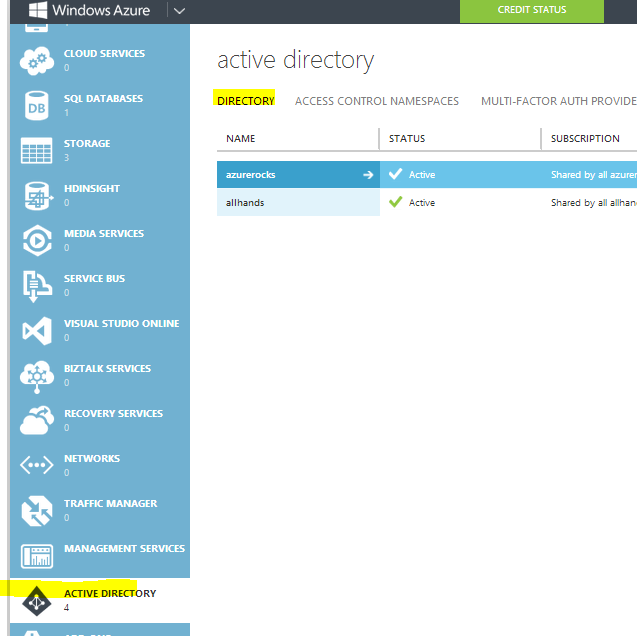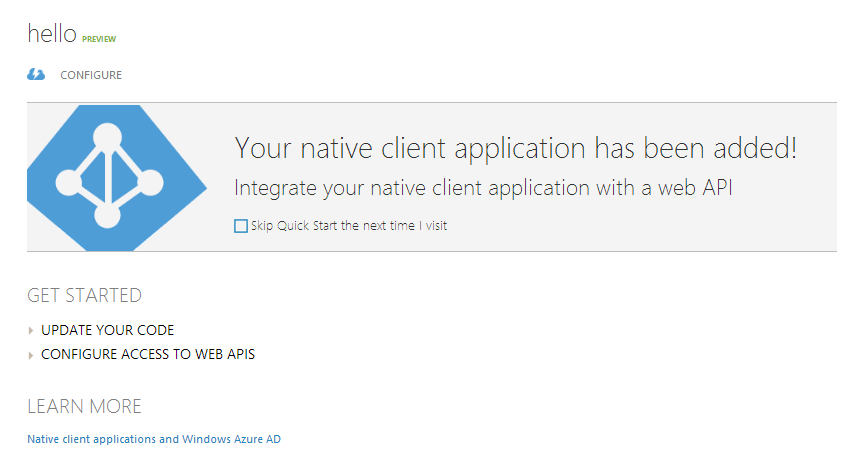Ruby on Rails is a popular framework to build websites. You could follow the guidelines here to get started: http://guides.rubyonrails.org/. It gives templates to start a simple blog or a webapi, but it is somewhat forcing to Rail way. I mentioned all that as you may try it first time, you may not like the issues with dependencies. Here, i assume you know how to run simple website and update a controller. I will just give short example to use existing oauth library to access to Azure Active Directory.
We will use Oauth2 library. Here is the github repo for that: https://github.com/intridea/oauth2
You should include require statement at the top of the controller.
How does it work
WebApp needs to get the authorization code after the user enters the credential and page redirects with authorization code in query parameters.
require 'oauth2'
class WelcomeController < ApplicationController
# You need to configure a tenant at Azure Active Directory(AAD) to register web app and web service app
# You will need two entries for these app at the AAD portal
# You will put clientid and clientsecret for your web app here
# ResourceId is the webservice that you registered
# RedirectUri is registered for your web app
CLIENT_ID = 'b6a42...'
CLIENT_SECRET = 'TSbx..'
AUTHORITY = 'https://login.windows.net/'
AUTHORIZE_URL = "/yourtenant.onmicrosoft.com/oauth2/authorize"
TOKEN_URL = "/yourtenant.onmicrosoft.com/oauth2/token"
RESOURCE_ID = 'https://yourtenant.onmicrosoft.com/AllHandsTry' #ResourceId or ResourceURI that you registered at Azure Active Directory
REDIRECT_URI = 'http://localhost:3000/welcome/callback'
# landing page to redirect for authorization url, if token does not exist
def index
update_token
if session['access_token']
# show main page and use token
redirect_to welcome_use_token_path
else
# start authorization
client = get_client
a = client.auth_code.authorize_url(:client_id => CLIENT_ID, :resource => RESOURCE_ID, :redirect_uri => REDIRECT_URI)
redirect_to(a)
end
end
# redirect will return to this page. You need to configure your redirectUri like: http://yoursite.com/callback
def callback
begin
@code = params[:code]
client = get_client
# post token to mobile service api
#token = client.auth_code.get_token(CGI.escape(@code), :redirect_uri => REDIRECT_URI)
# id_token token.params["id_token"]
#multi resource token token.params["resource"]
token = client.auth_code.get_token(@code, :redirect_uri => REDIRECT_URI, )
session['access_token'] = token.token
session['refresh_token'] = token.refresh_token
session['expire_at'] = token.expire_at
session['instance_url'] = token.params['instance_url']
redirect '/'
rescue => exception
output = '<html><body><p>'
output += "Exception: #{exception.message}<br/>"+exception.backtrace.join('<br/>')
output += '</p></body></html>'
end
end
# if you want to update tokens
def update_token
puts "update token inside"
token = session['access_token']
refresh_token = session['refresh_token']
expire_at = session['expire_at']
@access_token = OAuth2::AccessToken.from_hash(get_client, { :access_token => token, :refresh_token => refresh_token, :expire_at => expire_at, :header_format => 'Bearer %s' } )
if @access_token.expired?
puts "refresh token"
@access_token = @access_token.refresh!;
session['access_token'] = @access_token.token
session['refresh_token'] = @access_token.refresh_token
session['expire_at'] = @access_token.expire_at
session['instance_url'] = @access_token.params['instance_url']
end
end
# send request to a webservice to use a token
def use_token
# we got the token and now it will posted to the web service in the header
# you can specify additional headers as well
# token is included by default
update_token
conn = Faraday.new(:url => 'https://yoursite.azurewebsites.net/') do |faraday|
faraday.request :url_encoded # form-encode POST params
faraday.response :logger # log requests to STDOUT
faraday.adapter Faraday.default_adapter # make requests with Net::HTTP
end
response = conn.get do |req|
req.url '/api/WorkItem'
req.headers['Content-Type'] = 'application/json'
req.headers['Authorization'] = 'Bearer '+@access_token.token
end
@out = response.body
end
def get_client
client = OAuth2::Client.new(CLIENT_ID, CLIENT_SECRET, :site => AUTHORITY, :authorize_url => AUTHORIZE_URL, :token_url => TOKEN_URL )
client
end
end
You could plug in your clientId, authority, resourceid after you configure your app at Azure Active Directory portal. I will try to extend this later. You can access the gist from here: https://gist.github.com/omercs/9918845





